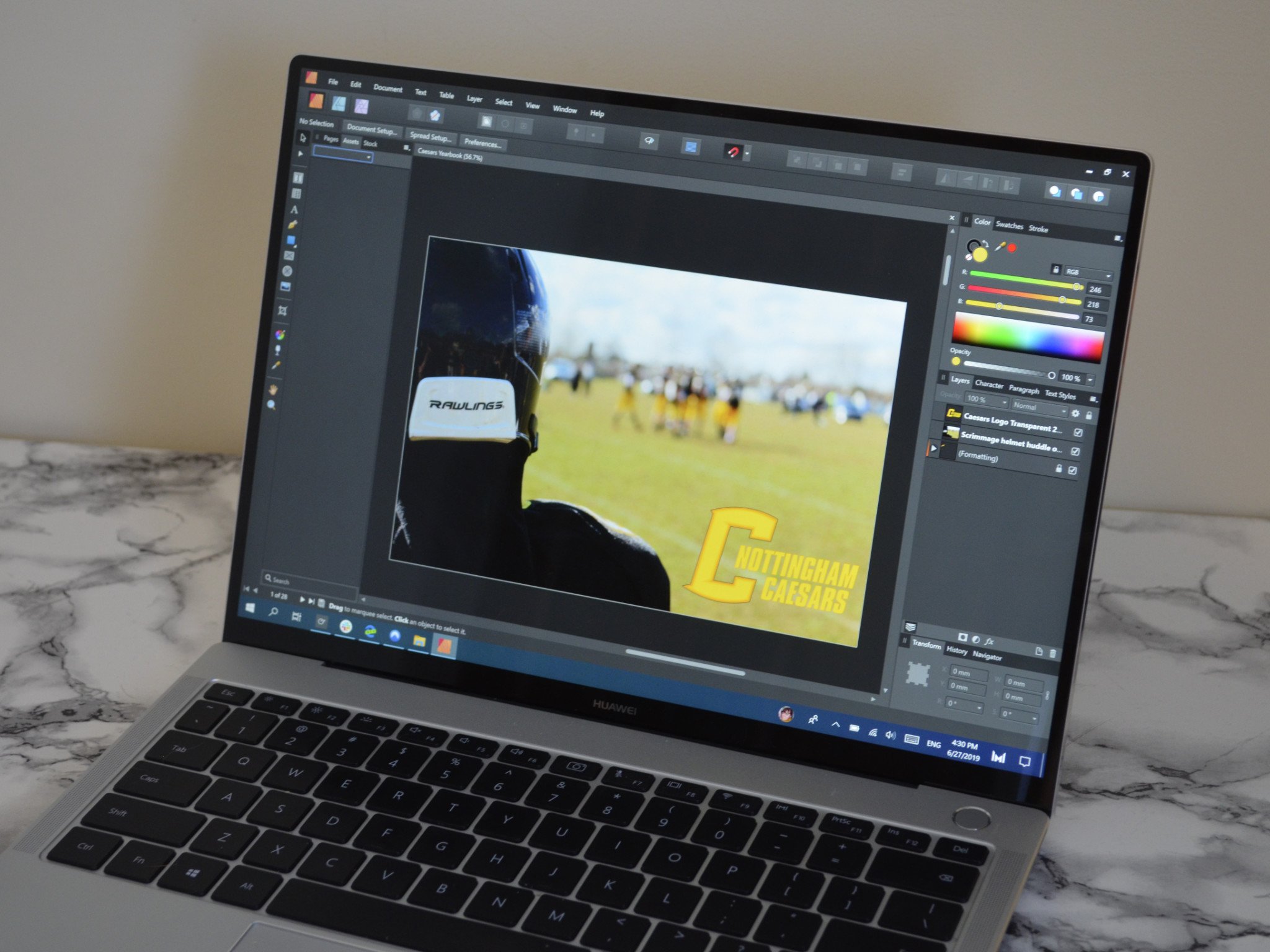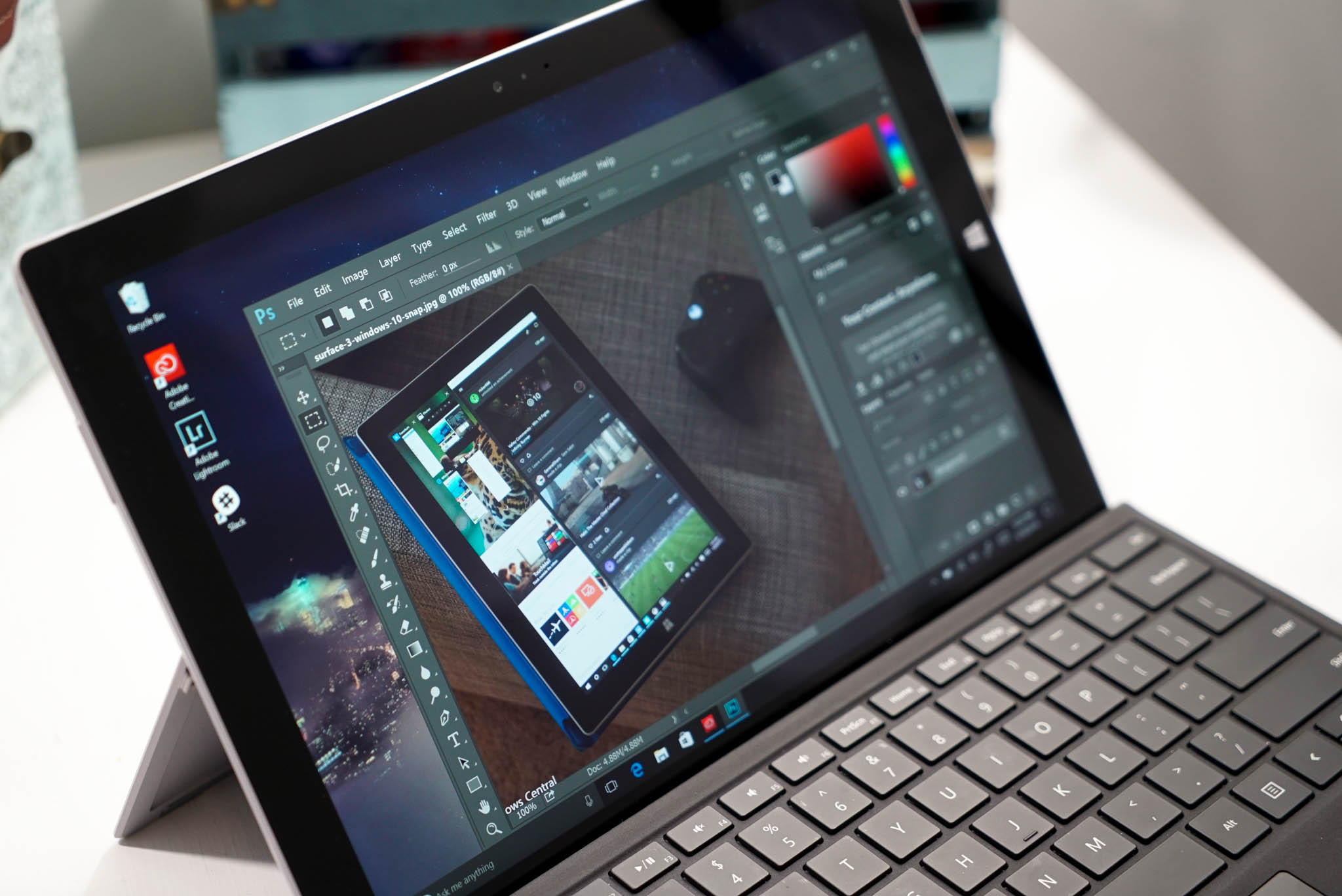Dear Serif, it's time to optimize Affinity Photo, Designer, and Publisher for Windows 10 on ARM
Serif optimized quickly for Apple's M1 chips, but Windows 10 on ARM is left out in the cold.

Serif, the makers of Affinity Photo, Affinity Designer, and Affinity Publisher, make some of my favorite creative apps on the market. They're available on Windows 10, iOS, and macOS, and none of them require a subscription. I'm a big fan of the Affinity suite, but its lack of Windows 10 on ARM support is increasingly frustrating.
I have a unique relationship with Serif. One of the first app reviews I wrote that ever got traction was for Affinity Photo. I then actually worked for Serif in their marketing department, including filming the first-ever Affinity Live at which the company announced Affinity Designer for iPad. Some of my old tutorial videos are still on Serif's website. I then ended up full-time at Window Central and reviewed Affinity Publisher. So, while I'm not a graphic designer or professional photographer, I'm very familiar with the Affinity suite.
Where's the love for Windows?

Affinity Photo, Designer, and Publisher are all available on Windows 10, but none of them are optimized for Windows 10 on ARM devices. That means that devices like the Surface Pro X can't use any of the Affinity suite. With pen support, a thin form factor, and the ability to power full displays, the Surface Pro X would be a perfect device for sketching, creating graphics, or doing a whole slew of creative work. Instead, Surface Pro X users have to use other apps.
This month threw a bit of salt in the wound for anyone with a Windows 10 on ARM device that can't use Affinity apps. Within days of Apple announcing its M1 chips, Serif announced support for the new silicon. In fact, the announcement of support is the first thing you see on the company's website. Affinity users on Macs didn't even have to wait a week to know that they'll be able to use their apps with the new Apple hardware.
In contrast, Windows 10 on ARM has been out in some form since 2017, including two Surface Pro X releases, and Serif doesn't seem to have plans for ARM support on Windows in the near future. I reached out to Serif to see if they have any plans, and all they can say at this time is that they want to add ARM support but that there isn't a timescale at this time. Serif cites that the process to compile for Windows 10 on ARM is more complicated than optimizing for Apple's M1 chip.
I'm not a developer, so I can't gauge how difficult development is. I believe that it is difficult, but assume that it's possible. I'd at least like to know that it's in the works and to see some public statements on it.
Adobe adopting ARM

I understand that optimizing for a new architecture can be difficult and that if a platform seems like it's doomed to fail, a company might not want to invest time in it. Windows 10 on ARM didn't always look so promising, and the first batch of Windows 10 on ARM devices running Snapdragon 835 processors probably wouldn't have showcased the Affinity apps well, but things have changed.
Get the Windows Central Newsletter
All the latest news, reviews, and guides for Windows and Xbox diehards.
Windows 10 on ARM has steadily improved over the years, and Microsoft has invested quite a bit on the software and hardware side of things. The Surface Pro X is a lovely device, and there are other good Windows 10 on ARM devices on the market, such as the Galaxy Book S.
Adobe seems to have taken notice to Windows 10 on ARM's improvements. Adobe rolled out Photoshop for Windows 10 on ARM in beta earlier today, just over a year after announcing its intention to bring over Cloud apps to ARM. The app has native support for ARM64 versions of Windows 10, so it's not like Adobe waited for emulated 64-bit app support.
As an avid Affinity user, it's increasingly frustrating that some excellent hardware can't run some of my favorite apps. The fact that Serif showed love to Apple's M1 chips so quickly and that Adobe jumped on the Windows 10 on ARM train doesn't ease the pain either.

Sean Endicott is a tech journalist at Windows Central, specializing in Windows, Microsoft software, AI, and PCs. He's covered major launches, from Windows 10 and 11 to the rise of AI tools like ChatGPT. Sean's journey began with the Lumia 740, leading to strong ties with app developers. Outside writing, he coaches American football, utilizing Microsoft services to manage his team. He studied broadcast journalism at Nottingham Trent University and is active on X @SeanEndicott_ and Threads @sean_endicott_.
